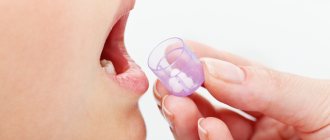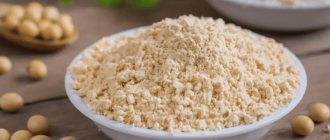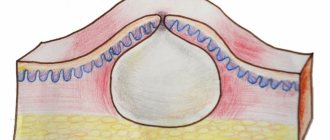Melanin: what is it?
Many people wonder what melanin is in simple terms, what is it for, how does it affect the body?
This is a high-molecular pigment, the concentration, variety and distribution of which determines the color of hair, skin, and eye color. The more it is, the richer and darker the shade.
There are 3 types of melanins:
- eumelanins;
- pheomelanins;
- neuromelanins.
The first ones have a brownish, black color. The latter are distinguished by their yellow, red-yellow color and give a pink or red tint to the lips, genitals, and nipples.
If the hair contains pheomelanins, it has a red color. Both the first and second are produced by melanocytes of the iris, retina, hair follicles, and skin.
Dermatologist Samir Bashey
Four or five genes are responsible for the synthesis of pigments in the epidermis. The number of active genes determines the intensity of pigment production.
As for the third type of pigments - neuromelanins, they are produced in the brain. Their functions are still unknown.
According to modern concepts, the pigment has antioxidant properties. It has been found that in Parkinson's disease, an active decrease in the concentration of dopamine neurons and neuromelanin occurs in the brain. As a result, a connection can be traced between the development of this disease and the neurodegradation of pigment in the brain.
Eye color depends not only on the type of melanin, but also on the characteristics of its distribution in the layers of the iris and concentration.
If the pigment is present exclusively in the 4-5 layer, then a blue, blue color is observed.
If melanins are located in the anterior layers of the iris, then the person has yellow-brown or brown eyes. If there is uneven distribution in the anterior layers, then the color is gray or green.
Food
Melanin in the body can be increased with a balanced diet. This is an option in which the body will be fully provided with the necessary amino acids, vitamins and microelements.
| Substances that promote better pigment production | Food products containing these substances. |
| Tyrosine | Walnuts, sesame seeds, almonds, dairy products, meat, wheat, legumes, eggs, avocado, pumpkin seeds, peanuts. |
| Tryptophan | Cheese, legumes, soybeans, cottage cheese, mushrooms, oats, fish, brown rice, meat, dates, peanuts, yogurt, pine nuts. |
| Vitamins A, C, carotene. | Carrots, grapes, rose hips, apricot, melon, peach, spinach, sweet potato, pumpkin, citrus fruits, legumes, tomatoes. |
| Vitamin E | Seeds, almonds, hazelnuts, cedar, peanuts, wheat germ, wheat bran, cashews, chum salmon caviar, cod liver, olives, salmon, Atlantic herring, oats. |
| Vitamin B10 | Whole grain bread, cabbage, mushrooms, liver, oats, eggs, spinach. |
| Mineral salts and copper | Mussels, squid, seaweed, peanuts, hazelnuts, liver. |
| Magnesium | Bran, pumpkin seeds, pine nuts, walnuts, sesame seeds, almonds, dates, beans, spinach. |
The amount of pigment may decrease with excessive consumption of foods such as:
- smoked meats;
- pickled and salted vegetables;
- alcoholic drinks;
- sweet carbonated drinks
- confectionery;
- coffee, cocoa, chocolate;
- corn;
- citrus.
Melanin function (3 pluses)
Let's look at the beneficial functions of melanins to better understand what they are:
- Pigments support the barrier protective functions of the skin. They absorb ultraviolet light, bind cations, anions, chelate (capture, bind) pro-oxidant metal ions (manganese, chromium, copper, mercury, lead). When light is absorbed under the influence of this pigment, the energy is partially converted into heat and partially spent on photochemical reactions.
- In addition to optical protection, they inhibit the effects of free radical reactions in cells and have an antioxidant effect.
- Pigments are involved in eliminating the effects of stress and are an integral part of the immune system.
- They deactivate free radicals that are formed after irradiation with ionizing ultraviolet radiation.
But it also happens that melanins oxidize, polymerize, and produce free oxygen radicals that damage the cell, which causes premature aging of the skin (probably many have heard that with excessive exposure to the sun, the skin not only tans, but also ages faster).
Due to the pigment's ability to produce reactive oxygen species, it both protects and damages the skin when oversynthesized.
Medicines and dietary supplements
Melanin is an organic substance, the production of which can be activated and the condition of the skin can be improved through the use of various medications and dietary supplements.
The table shows some of them:
| Name of the drug | Compound | Indications for use | pharmachologic effect | Price |
| Retinol acetate (Russia) | Vitamin A oil solution. | Prevention and treatment of A-hypovitaminosis. | It has a pronounced antioxidant and immunostimulating effect, promotes tissue regeneration, improves vision, normalizes metabolism, and increases the body's resistance to infections and colds. | The price depends on the form of release and the manufacturer from 8 to 250 rubles. |
| "Pro Soleil" (France) | Lutein, beta-carotene, vitamin complex. | Recommended for improving the quality of tanning. | Increases melanin production, prevents flaking and dry skin. | 30 capsules – 2000 rub. |
| "Bevital - san" (Croatia) | Vitamins E, B1, B2, B6, brewer's yeast in an inactive state. | It is recommended to take before visiting a solarium or for skin diseases. | Prevents photo-aging of the skin. | 60 capsules – 250 rub. |
| "Nature Tan" (France) | Turmeric, selenium, grape extract, zinc, beta-carotene, vitamins E, C. soy isoflavones. | Protects against ultraviolet radiation. | Helps increase pigment production. | 30 capsules – 1219 rub. |
| "Norwesol" (Norway) | Seal fat. | Source of omega-3 polyunsaturated fatty acids, vitamins A and E. | It has a slight effect on the level of tanning, while effectively protecting the skin from burns and helping to improve its condition in case of any pathologies. | 100 capsules – 720 rub. |
There are other medications and dietary supplements that are effectively used to stimulate the production of the coloring pigment melanin. But before you start using them, you need to consult your doctor.
Where is melanin formed?
Melanocytes are cells that synthesize melanin. They have a multifaceted body, long dendritic processes that branch between the skin cells.
Melanocytes can be located in the connective tissue structure of the skin.
Dermatologist Marty Gidon
Connective tissue melanocytes and epidermal melanocytes have generally similar properties: neural origin, melanosomes, melanin biosynthesis enzymes, etc.
Melanin-containing cells are also found in the brain, spinal cord, genital area, inner ear, adrenal medulla, iris, and hair follicles.
The scalp (the scalp) has the highest number of melanocytes. The number of these cells does not change much with age, but their productivity does. Melanin is produced in smaller quantities as we age.
At the same time, there are some gender differences: men have more such cells than women.
Many people mistakenly believe that people of the Negroid race have a much higher number of melanocytes than white-skinned people. But in reality it is almost the same.
In dark-skinned individuals, these cells differ in size (larger), the predominant type of pigment produced (eumelanins), and location (melanin granules are present in all layers of the epidermis, including in corneocytes).
Cosmetic preparations
In pharmacies and online stores there is a wide selection of cosmetics containing melanin or components that promote its production.
Samples of such products are shown in the table:
| Name of the drug | Compound | Indications for use | pharmachologic effect | Price |
| Cream Vitasan (Russia) | St. John's wort, fir oil, cedar oil, string, calendula, walnut. | vitiligo; inflammation of the skin, for the treatment of wounds and trophic ulcers; getting an even and beautiful tan. | Improves skin color, reduces the appearance of white spots; has an antiseptic and wound-healing effect. | 1000-1200 rub. |
| Gel Vitilemna (Czech Republic) | Duckweed extract, propolis, amaranth. | vitiligo; psoriasis. | Gives good results in the treatment of skin diseases; helps strengthen the immune system and improve the general condition of the body. | 3000-3400 rub. |
| Gel Vitix (France) | Melon extract and hydrogenated palm oil. | Treatment of vitiligo spots. | Promotes the production of melanin pigment and prevents the development of vitiligo. | 2200-2750 rub. |
| Shampoo Tian De Master Herb;420 ml (China) | Extract of ginseng, lovage and angelica. | increased hair loss; baldness; slower hair growth. | Promotes the appearance of hair in areas of baldness; prevents early gray hair; activates metabolism; strengthens hair follicles. | 900-1100 rub. |
| Balm Antisedin “Russia” | Horsetail and nettle extract, ammonium chloride, ethyl alcohol, glycerin, sulfur. | premature gray hair; dandruff; hair loss. | Restores hair color and improves hair growth, prevents the formation of dandruff. | 126-167 rub. |
What happens when there is a deficiency of melanin?
A change in the concentration of a substance in tissues can provoke the development of pathologies such as Parkinson’s disease, vitiligo, albinism, etc.
In addition, melanocytes that produce melanin are the founders of malignant formation - melanoma.
If pigment synthesis is insufficient or completely absent, albinos are born - people who have white hair and skin.
In addition to their distinctive appearance, such individuals have problems with vision, hearing, and immune defense.
There are also cases when pigment disappears in certain areas of the skin, and peculiar white “islands” form on the epidermis. This condition is called vitiligo.
There is an assumption that it is provoked by:
- nervous tension;
- injuries, operations;
- medicines;
- chemical, sunburn;
- chronic inflammatory processes on the skin;
- endocrine, autoimmune disorders;
- genetic predisposition;
- necrotic phenomena.
Foods that increase melanin production
The pigment is produced only by the human body from the amino acid tyrosine. It can be obtained from certain products: soybeans, beans, pumpkin seeds, sesame seeds, grains, avocados, almonds, dates, legumes, greens.
Reasons for decreased melanin levels
Possible causes of decreased melanin levels include:
- diseases transmitted at the genetic level;
- nervous breakdowns;
- hormone replacement therapy;
- diseases of the endocrine glands;
- aging;
- lack of tyrosine and tryptophan;
- deficiency of amino acids, vitamins and microelements;
- lack of sunlight.
What happens when there is excess melanin?
The pigment is sometimes produced in excess. In this case, the pathology is called melanosis.
It can be acquired or congenital. It appears as hyperpigmented spots on the skin. For example:
- Moles.
- Freckles.
- Chloasma.
- Lentigo.
- Post-acne.
- Photoaging of the skin.
Of the above, moles are not always safe for the human body. Nevus cells under the influence of unfavorable factors can transform into malignant ones and provoke the development of melanoma.
You need to keep an eye on your moles. Changes in size, border, structure, the appearance of bleeding, ulcers, etc. should be a reason to consult a doctor.
Dermatological surgeon Jennifer Trent
Sometimes pigmentation signals severe internal illnesses. In particular, the bronze-brown color of the epidermis may indicate adrenal insufficiency, while the yellow color may indicate dysfunction of the liver and biliary tract.
Wide brown spots are sometimes harbingers of Riel melanosis. Hyperpigmentation requires medical supervision, as it often serves as a marker of various health disorders.
Foods that reduce melanin production
There are products that slightly slow down pigment synthesis. This includes: salted, smoked, fatty foods, sweets, boiled corn, coffee, alcohol. Excess vitamin C, despite the fact that it protects the skin and the entire body from free radicals, inhibits the ability of tissues to synthesize melanin.
Question answer
When the sun's rays hit the skin, they begin to burn it. As a result, activation of free radicals is observed. The cell is literally destroyed. It is melanin that absorbs free radicals, which saves our cells.
If your tan is uneven, gray hair appears early, wrinkles appear, there are white spots on the skin surface, and you often have burns, then you should suspect a lack of melanin.
To do this, review your lifestyle, get rid of bad habits, eat healthy foods, and as prescribed by your doctor, you can start taking medications and dietary supplements.
Melanin and melatonin - what are the differences?
Due to the similarity in names, many people confuse melanin and melatonin. Also quite often there are questions of the following nature: what is it, why is it taken, does it affect sleep, etc.
Let's start with the fact that melanin and melatonin are 2 completely different substances.
Melanin, as stated above, is a high-molecular pigment that is responsible for the color of the skin, mucous membranes, hair, and eyes.
Melatonin is a hormone produced by the brain.
It has antioxidant and immunomodulatory properties, so it is often called the elixir of health, which helps maintain youth, freshness of the skin, and beauty.
Numerous clinical trials have proven the benefits of taking melatonin for the treatment of various diseases, ranging from cardiovascular diseases to disorders of the gastrointestinal tract.
Dermatologist Sean Allen
The role of melatonin
The hormone affects the functioning of the biological clock and a person’s appearance. The body of an adult usually contains 3 mg of this substance; during the day its concentration decreases, increases in the evening, and reaches its maximum level at night.
This is because synthesis begins between 10:00 pm and 4:00 am. The hormone triggers restoration processes in the body, activates the immune system, neutralizes reactive oxygen species, protecting the body from premature aging and disturbances in the functioning of organs and systems.
The substance protects against stress and promotes rapid sleep, so its role in the body is extremely important.
Why do many people experience melatonin deficiency?
In the rhythm of modern city life, every second person has problems falling asleep, quality, and duration of sleep.
To spend time with friends and favorite things after a productive day at work, sometimes you have to fall asleep after midnight. This disrupts the normal synthesis of the hormone, a deficiency develops, which is why a person stops feeling cheerful.
At the same time, the aging process of cells accelerates, which becomes a prerequisite for the development of various diseases and premature wrinkles.
But the full synthesis of this substance is hampered not only by untimely falling asleep, but also by increased lighting of the room during rest.
In order not to disrupt the synthesis of melatonin, it is recommended to sleep with the curtains closed, without nightlights, mobile devices and other light sources.
If work activity is associated with the second half of the day, then, if possible, lighting should be kept to a minimum.
Melatonin as a medicine
The properties of this hormone and its effect on the body make it possible to use it to treat various diseases. It is allowed to take medications with melatonin in small dosages to correct various conditions.
Very often the hormone is taken as a mild sleeping pill. But it doesn’t just help you sleep, its spectrum of action is much wider.
Dietary supplements are excellent helpers in the fight against the consequences of insufficient night rest: chronic fatigue, disruption of the nervous system, desynchronosis, depression, etc.
Some studies indicate the effectiveness of using this substance in the treatment of cardiac ischemia, high blood pressure, and stomach ulcers.
Taking the drug will benefit people after 40 years of age. The dietary supplement is taken in courses. You need to take 1-3 mg per day.
It is also suitable for use by those who regularly experience stressful situations or have a night work schedule. A course of melatonin will help normalize well-being for those who suffer from sleep deficiency.
Unfortunately, the synthesis of the substance decreases over the years, so many older people experience serious sleep problems. To compensate for the lack of the hormone, this substance is also recommended for older people.
There is no need to worry about the development of side effects if you follow the indicated dosage, duration of use, contraindications (diabetes mellitus, gestation period, breastfeeding, autoimmune diseases, epilepsy).
The substance does not cause addiction, nor does it reduce the synthesis of your own melanin.
Dermatological surgeon Jennifer Trent
In very rare cases, however, an individual reaction in the form of nausea, headache, and stomach discomfort is possible. In this case, it is recommended to either reduce the dosage or stop taking it altogether.
Healthy lifestyle
It is well known that the level of melanin can vary depending on the characteristics of a person’s lifestyle.
In order not to experience a deficiency of vitamins, minerals and essential amino acids, which are the building blocks of cells, you need to eat a full and balanced diet. This is one of the main conditions for increasing melanin synthesis.
It is also very important to do what you love and live a full life - spend more time in nature, stop smoking , maintain a sleep-wake schedule, and avoid stress. Moderate physical activity, especially swimming, is beneficial.








